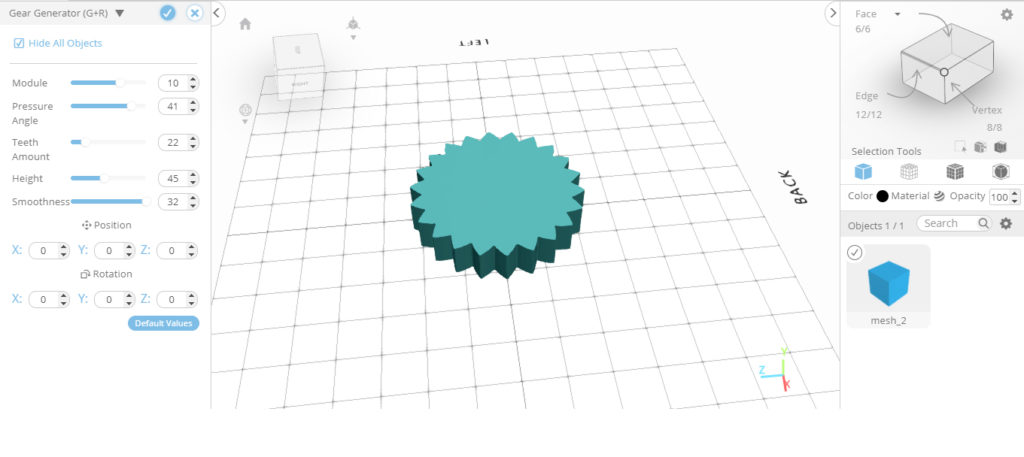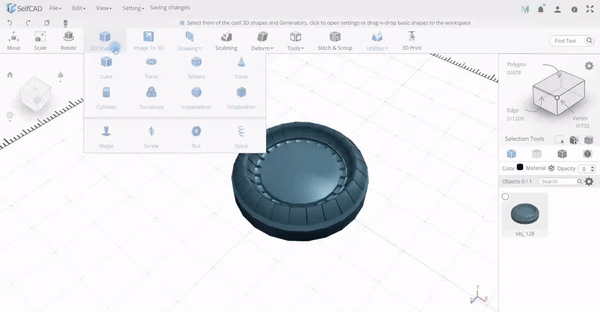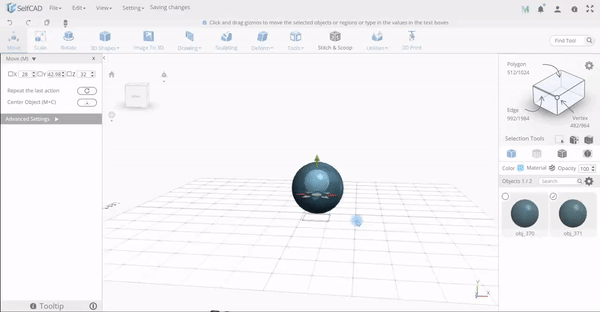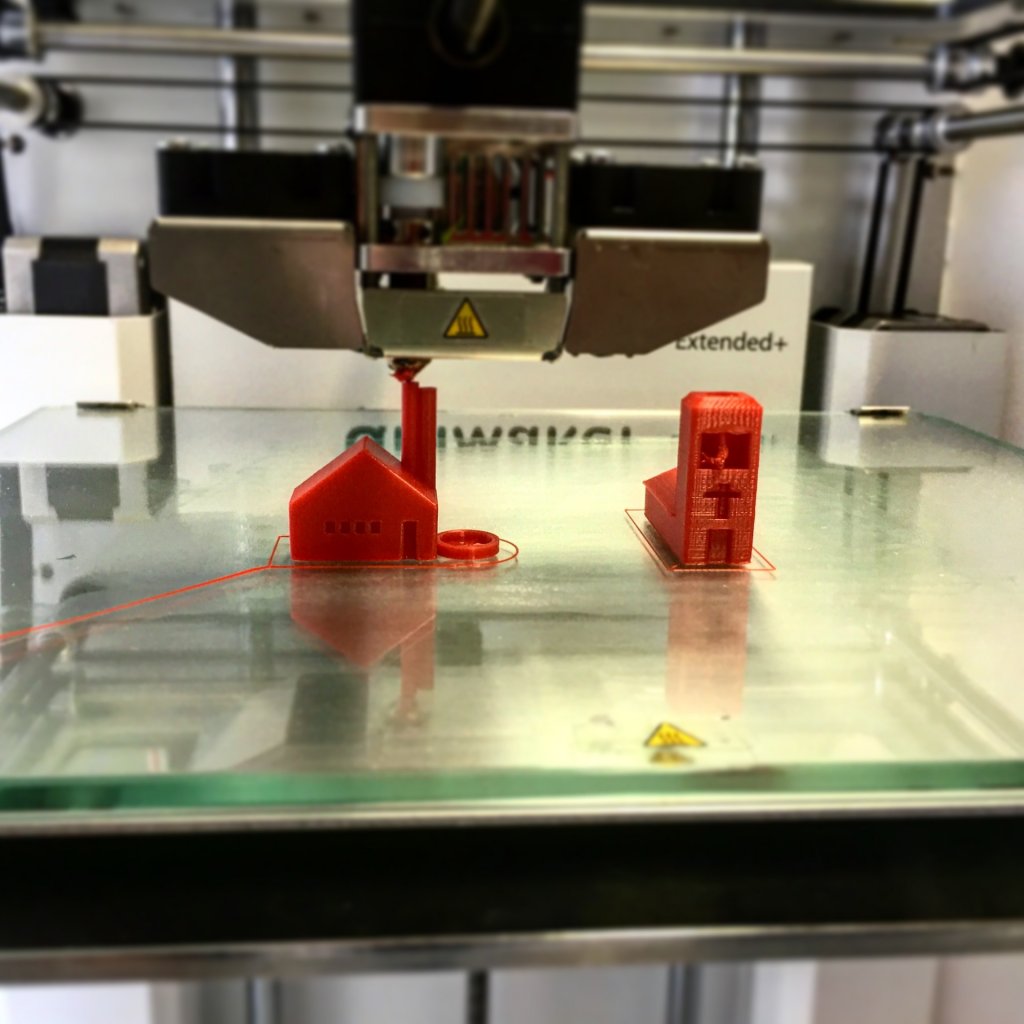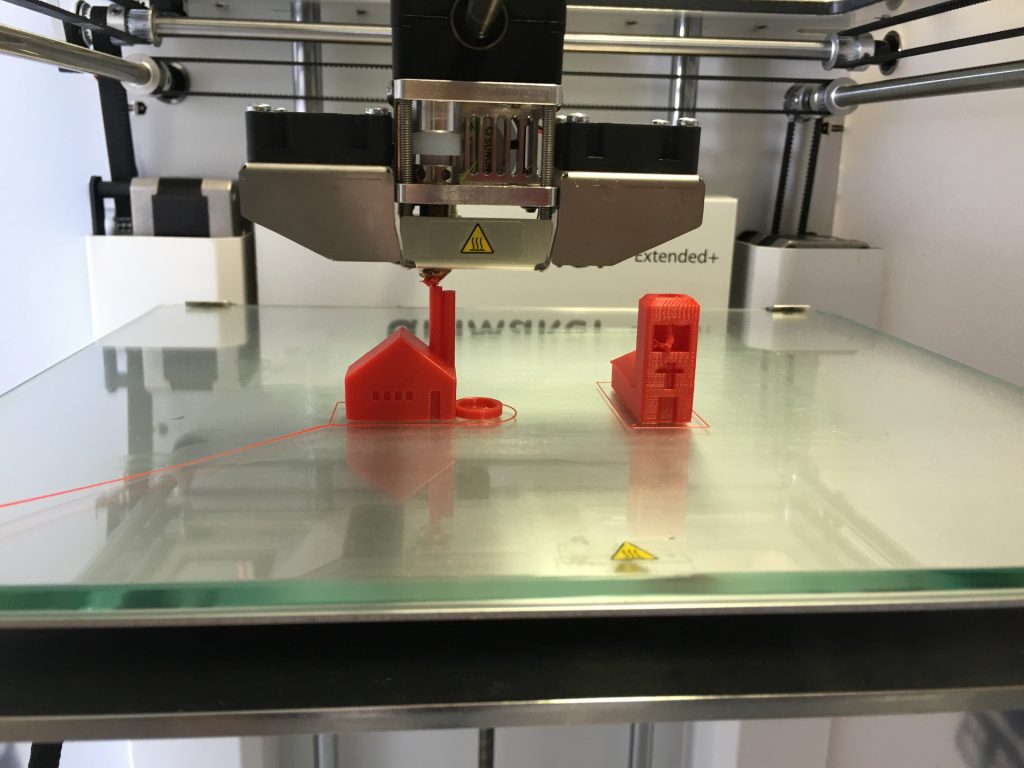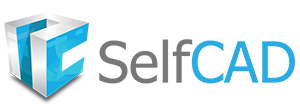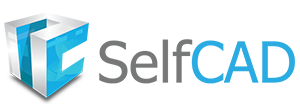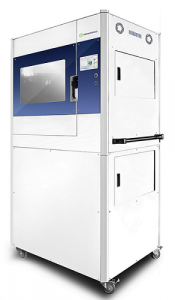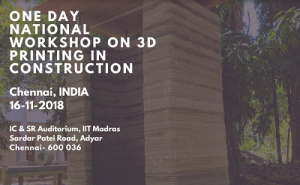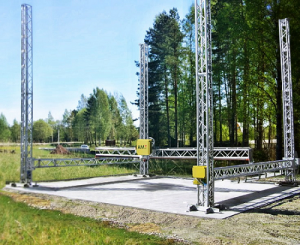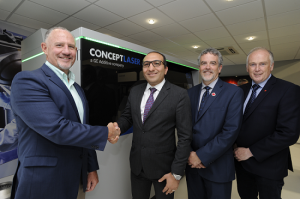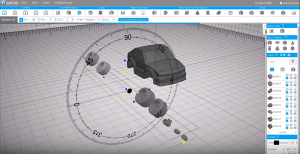It’s the first 3D Printing News Briefs of the month! To start with, SelfCAD released a new update, and ACEO is hosting a webinar series about 3D printing with silicones, while Objectify Technologies and TAGMA India are hosting a webinar series about AM adoption. Finally, SHINING 3D and Scan the World are using 3D scanners to bring art and culture to people during a time when most can’t leave their homes.
SelfCAD 2.9.2 Release
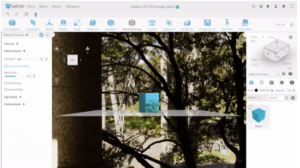 SelfCAD has released its latest software update, SelfCAD 2.9.2, which improves upon existing features and adds new ones to make 3D modeling and printing more efficient. First, there’s a new Environment Map feature in the Settings dropdown menu that lets you add lighting and scenery to your model, and even an environment map. In advanced settings, the new Macro Preview feature lets you see the results of the macros you’ve added without having to finalize your choices.
SelfCAD has released its latest software update, SelfCAD 2.9.2, which improves upon existing features and adds new ones to make 3D modeling and printing more efficient. First, there’s a new Environment Map feature in the Settings dropdown menu that lets you add lighting and scenery to your model, and even an environment map. In advanced settings, the new Macro Preview feature lets you see the results of the macros you’ve added without having to finalize your choices.
You can set a Minimum Step Size for Drawing, Transformation, and Deformation tools, and apply several operations, such as Chamfer, Fillet, Round Object, and Simplify, to Profiles. In addition, SelfCAD has fixed some bugs, and added more settings and options to the Round Object tool. If you have any questions or bugs to report, you can join the SelfCAD Facebook group or email support@selfcad.com.
ACEO Presenting 3D Silicone Printing Webinar Series
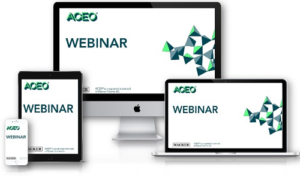 Due to newly implemented health and safety measures during the COVID-19 pandemic, ACEO continues to be operational, but is unable to receive customers right now. So, in an effort to stay connected during these strange times, the company’s team of application specialists, design engineers, and material experts are presenting a series of webinars – in English – all about silicone 3D printing.
Due to newly implemented health and safety measures during the COVID-19 pandemic, ACEO continues to be operational, but is unable to receive customers right now. So, in an effort to stay connected during these strange times, the company’s team of application specialists, design engineers, and material experts are presenting a series of webinars – in English – all about silicone 3D printing.
The first one, “ACEO Basics,” will be held Tuesday, April 7, from 9-9:30 CET, and Wednesday, April 8, from 4-4:30 CET. You can sign up for the webinars here; the event password is jVMGwgX$242. Future topics for the series, with dates not yet announced, are “Real Silicones,” “Design Freedom,” and “ACEO Use Cases.” Please email service@aceo3d.com with your name, company/organization, and country if you’d like to sign up. A modern browser (i.e. not Internet Explorer) is recommended to watch the webinars.
Objectify Technologies and TAGMA India Holding Webinars
 As many people around the world are staying indoors and away from other people during the pandemic, it’s easy to get bored. But, you can spend your time in a productive way, which is why Objectify Technologies and TAGMA India are holding their own 3D printing webinar series together. The series, themed “3D Printing: Prototype to Production,” was created to promote adoption of and spread awareness about additive manufacturing. Webinars will begin on April 6th and go through April 14th, with topics such as Additive Manufacturing/3D Printing 101, Learnings and Misconceptions, and Current Challenges and Demand of the Industry.
As many people around the world are staying indoors and away from other people during the pandemic, it’s easy to get bored. But, you can spend your time in a productive way, which is why Objectify Technologies and TAGMA India are holding their own 3D printing webinar series together. The series, themed “3D Printing: Prototype to Production,” was created to promote adoption of and spread awareness about additive manufacturing. Webinars will begin on April 6th and go through April 14th, with topics such as Additive Manufacturing/3D Printing 101, Learnings and Misconceptions, and Current Challenges and Demand of the Industry.
“To help engineers around the world learn something new in this lockdown time, we have come up with a series of webinars on Additive Manufacturing (AM). The idea behind this webinar is to spread awareness regarding the AM technology and help companies in their journey towards industry 4.0,” said Ankit Sahu, Founder & Director, Objectify Technologies Pvt Ltd. “The objective is to encourage individuals ranging from students, researchers, and industrialist, on 3D Printing and the value it possesses for Industry 4.0.
“I thank Mr. DK Sharma, President TAGMA India and the entire team of TAGMA for their support. During this challenging time, it’s the collective effort that will help us all grow. Let us all do our bit to help the industry in skill development.”
3D Scanning to Build a Museum Without Walls
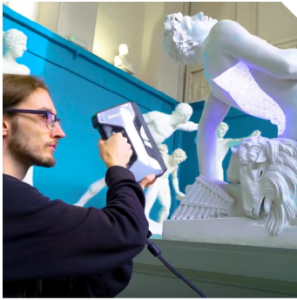 Continuing on in our list of things to do while stuck inside during the coronavirus crisis, SHINING 3D has been working with MyMiniFactoryto to digitize important artifacts for its Scan the World community-built initiative, which archives 3D printable sculptures and other culturally significant objects. Together, they are basically building a 3D museum without walls that anyone can access at any time and from anywhere. Many museums open their data with an open license in 2D, but don’t have the necessary resources to do so in 3D. Scan the World founder and manager Jon Beck is offering museums a free end-to-end service of scanning the sculptures, with the EinScan Pro 2X Plus, before processing the data into 3D models and uploading them to the museum’s Scan the World profile.
Continuing on in our list of things to do while stuck inside during the coronavirus crisis, SHINING 3D has been working with MyMiniFactoryto to digitize important artifacts for its Scan the World community-built initiative, which archives 3D printable sculptures and other culturally significant objects. Together, they are basically building a 3D museum without walls that anyone can access at any time and from anywhere. Many museums open their data with an open license in 2D, but don’t have the necessary resources to do so in 3D. Scan the World founder and manager Jon Beck is offering museums a free end-to-end service of scanning the sculptures, with the EinScan Pro 2X Plus, before processing the data into 3D models and uploading them to the museum’s Scan the World profile.
“The quality is very nice for the price that you pay. Scanning is still quite a high-level-entry technology, but what SHINING 3D has been able to do is to create an accessible affordable product, which still produces very good results for a wide range of industries, for me working with sculptures I haven’t found any issues so far working with marble and plaster sculptures and even bronze sculptures. EinScan has been able to solve all of these problems for me,” Beck said.
“There is so much story behind every single artwork whether it’s an original or it’s a copy which is quite beautiful and so, working with each member of staff in the museum who want to tell a different story about their collection is great.”
Discuss these stories and other 3D printing topics at 3DPrintBoard.com or share your thoughts in the Facebook comments below.
The post 3D Printing News Briefs: April 4, 2020 appeared first on 3DPrint.com | The Voice of 3D Printing / Additive Manufacturing.



